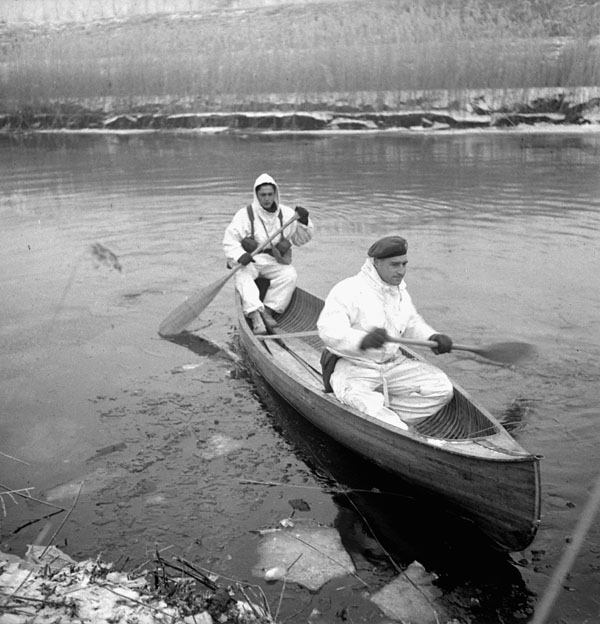
A few days before Operation Elephant began in January 1945, men from the Lincoln and Welland Regiment train launching and paddling on the icy river. [DND/LAC/ PA – 142421]
After failed attacks by the Polish and British, the 4th Canadian Armoured Division was ordered to destroy the German position on the island of Kapelsche Veer.
The island was small—only eight kilometres long and less than two at its widest. But its faces were steep angles, the southern side protected by dikes wide and high, with German defensive positions built in and machine guns covering all approaches.
It was only a tiny bridgehead, but it gave the Germans a fine place to observe Allied movement and to fire into Allied positions.
The German garrison of 150 was well protected by artillery, and ordered to hold the island at all costs. The Lincoln and Welland Regiment, supported by the Argyll and Sutherland Highlanders of Canada and the South Alberta Regiment tanks, were ordered to take it.
Two companies attacked from the east. Working at night, engineers built a bridge on the eastern end of the island over which Universal Carriers with flame projectors, known as Wasps, could cross in the morning, protected by bombardment and a smokescreen. But the Wasps were too heavy to climb the dike, so the infantry went on alone.
Meanwhile, 60 volunteers set out in canoes, a smokescreen unsuccessfully protecting them from German fire from riverbanks and dikes. The canoes had to be hauled over ice; the men’s snowsuits were sodden, and dunked weapons froze solid.
A third company, which crossed by amphibious tractor, made good progress on the western side of the island until the smokescreen dissipated.
Survivors of all parties desperately tried to dig into the frozen ground for cover.
Despite fierce counterattacks, rain and snow and high casualties, including many from the cold, the Canadians held their ground and attacked when they could. A few tanks were ferried over, and on the night of Jan. 29-30, the island was taken.
The Germans attempted to float in reinforcements on Jan. 30, but their ferries were sunk. Under an artillery barrage, they withdrew their troops on Jan. 31.
Advertisement






















